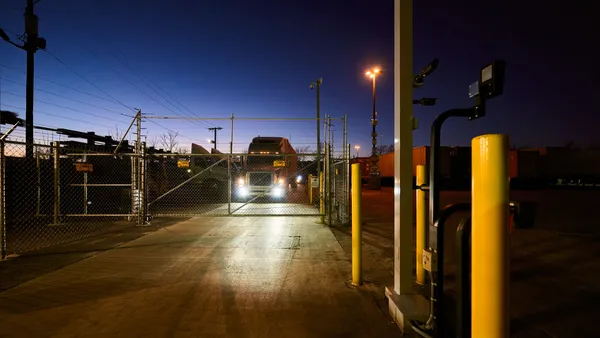For cold storage facilities the second highest operating cost is energy. Maintaining stable temperatures, especially in frozen food applications, requires continuous refrigeration and massive amounts of energy. Finding ways to balance energy costs and temperature stability is a constant battle forcing operators to perpetually seek new technologies and strategies that protect product and their bottom line.
The fastest ways to achieve this balance are adding efficiencies to the facility and adding flexibility to how and when to purchase the power that drives refrigeration equipment. This is similar to achieving better fuel efficiency for automobiles on highways versus city streets and throwing in some downhills to further reduce fuel costs. Below are five strategies that can lower energy costs while maintaining stable temperatures inside frozen food warehouses.
1. Run Refrigeration Equipment Fewer Hours
Obviously, operators are already minimizing equipment run time, but maintaining temperature requirements puts limits on how far operators can push this strategy. Continuous and fluctuating heat infiltration from daily operations and seasonality complicate this strategy and require more thermal mass inside the freezer to maintain stable temperatures for longer. By adding Thermal Energy Storage (TES) from Viking Cold, operators utilizing a “limited run time strategy” can maintain temperature requirements with refrigeration equipment idle up to 13 hours or longer without risking food quality. TES absorbs up to 85% of heat infiltration reducing runtime, kilowatt hours, and dollars of energy costs.
2. Shift Refrigeration Loads to Avoid Time-of-Use Pricing
Many utilities apply time-of-use or peak period pricing to encourage off-peak energy consumption. These increased pricing periods may span up to 13 hours per day and vary by season throughout the year. For cold storage operators who require near constant refrigeration, consumption during these periods is difficult to avoid entirely and can account for up to 70% of their utility bill. By implementing a strategy to run fewer hours during specific high-priced times of the day, operators can dramatically reduce energy costs. An operator of a 93,000 square foot frozen food warehouse in California implemented TES technology, improved his temperature stability, and dropped 43% of his 13-hour peak period consumption every weekday.
3. Increase Efficiency with More Nighttime Refrigeration
Because it is easier for refrigeration equipment to reject heat into the atmosphere when the outside temperature is cooler, running at night will always increase the efficiency of a refrigeration system. With TES installed inside a facility, the cold generated during this more efficient period can be stored and used as supplemental cooling during the day. This helps minimize refrigeration run time during the warmer, and typically more expensive, times of the day. Meanwhile inside the freezer, TES has a higher heat transfer rate than frozen food which means heat is absorbed faster by TES and then removed in less time using less energy.
4. Maximize Equipment’s Designed Efficiency
To maintain stable temperatures, most cold storage operators are currently running equipment below the refrigeration system’s peak design efficiency for the majority of each day. Every refrigeration system has an ideal output yielding the highest efficiency. To optimize refrigeration efficiency, these systems should be run at 100% of their peak designed output, often referred to as “fully loaded,” as much of the time as possible. With TES installed, refrigeration systems run fully loaded more of the time and are also able to be idled for longer periods.
5. Add Alternative Energy Generation
Adding alternative sources of power generation, like wind or solar, will reduce dependency on expensive grid power and may even create an opportunity to sell energy back into the grid. But, alternative energy also comes with intermittency (cloudy days or no wind). By combining alternative power and thermal energy storage onsite behind-the-meter, the intermittency issue is minimized, and the investment becomes even more profitable. A cold storage warehouse inside the San Diego Food Bank added solar and TES and was able to reduce overnight grid-sourced refrigeration by 95% and lower annual refrigeration energy costs by 39%.
Until recently, technologies that help operators reduce energy costs have only made incremental improvements. Now with an intelligent and flexible TES system, operators can implement the strategy that best fits their facility and will reduce their energy costs up to 35% or more.










